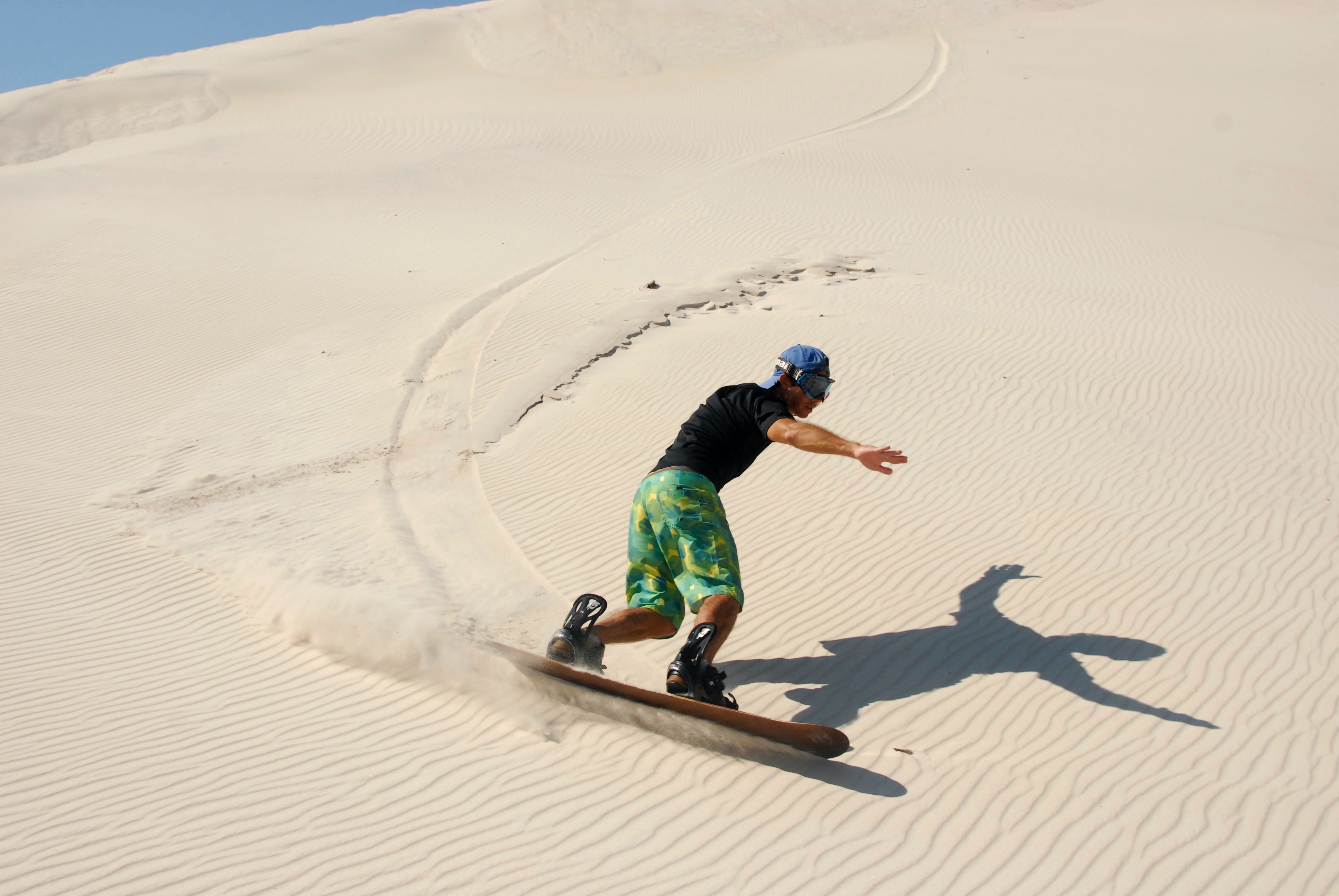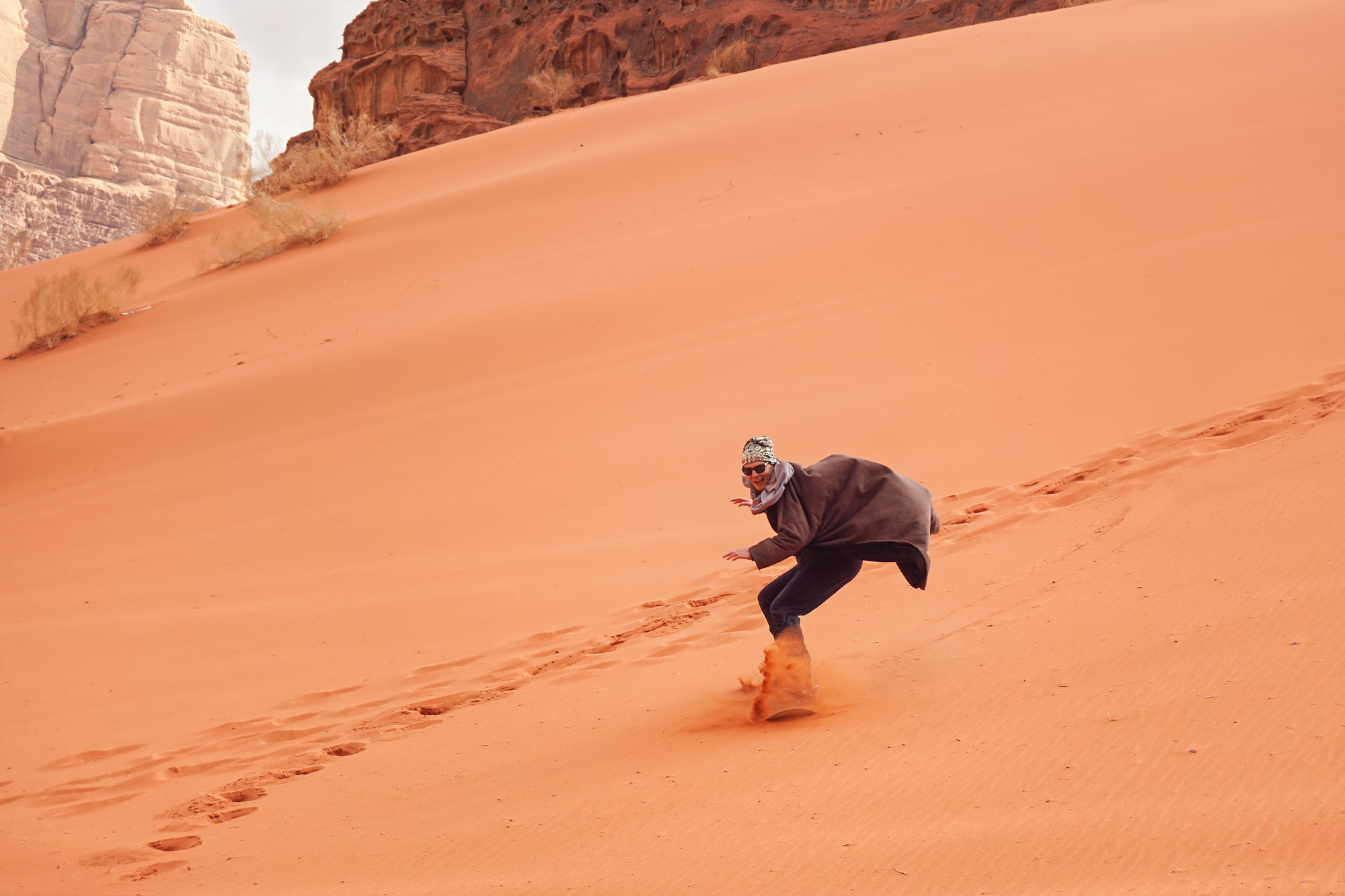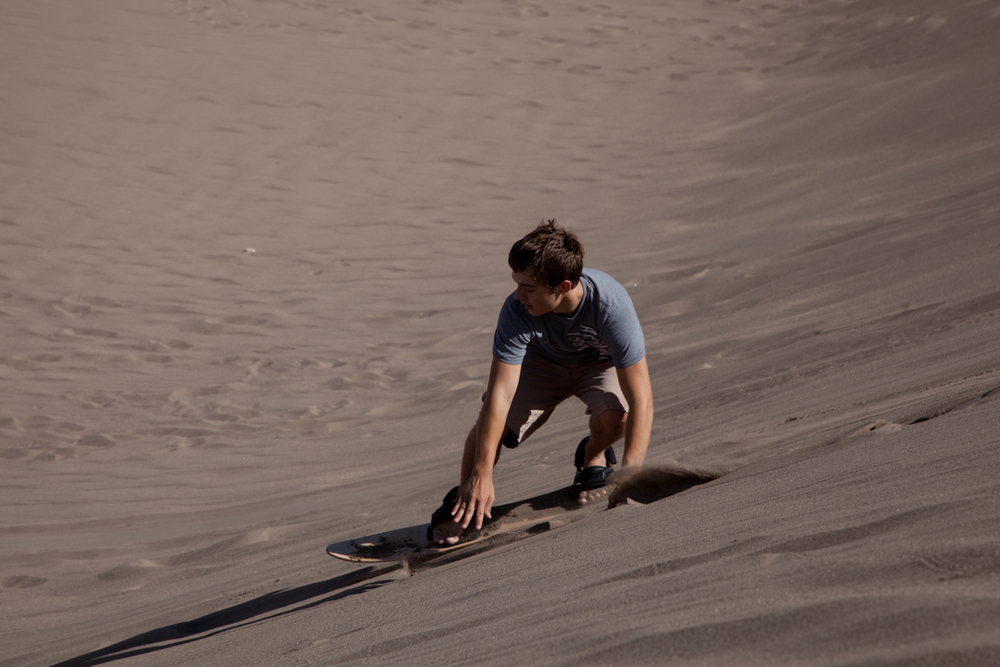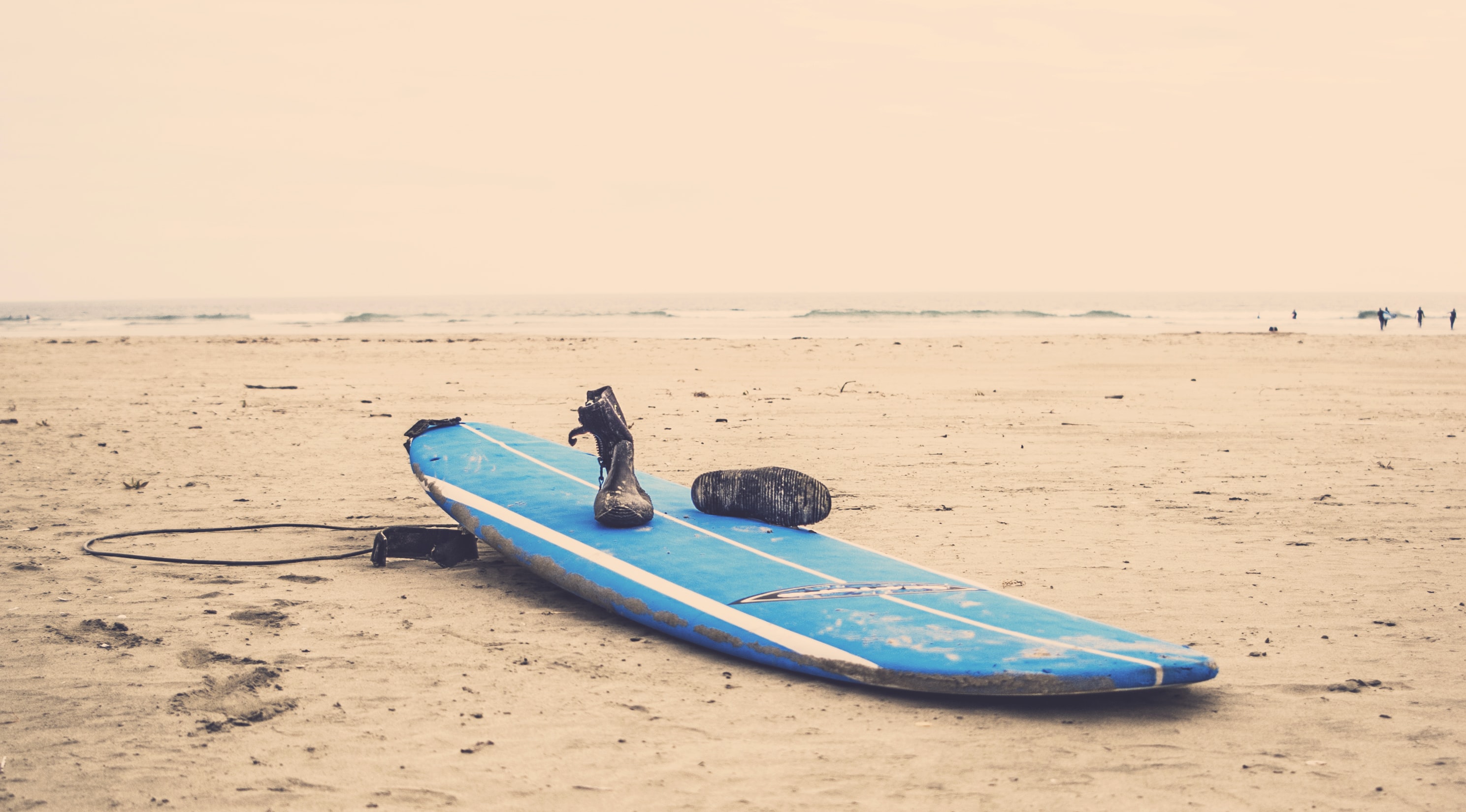Have you ever gone skiing or snowboarding on sand? If not, then you are missing out on a fun and exciting sport known as sandboarding or sand surfing.
This activity is exactly what it sounds like – riding down a hill of sand on a board or a surfboard. It can be done on beaches or in deserts and is quickly growing in popularity all over the world. And yes, it's as much fun as it looks!
Let's take a closer look at sandboarding/sand surfing and some of the basics you need to know before giving it a try.
What is Sandboarding/Sand Surfing?
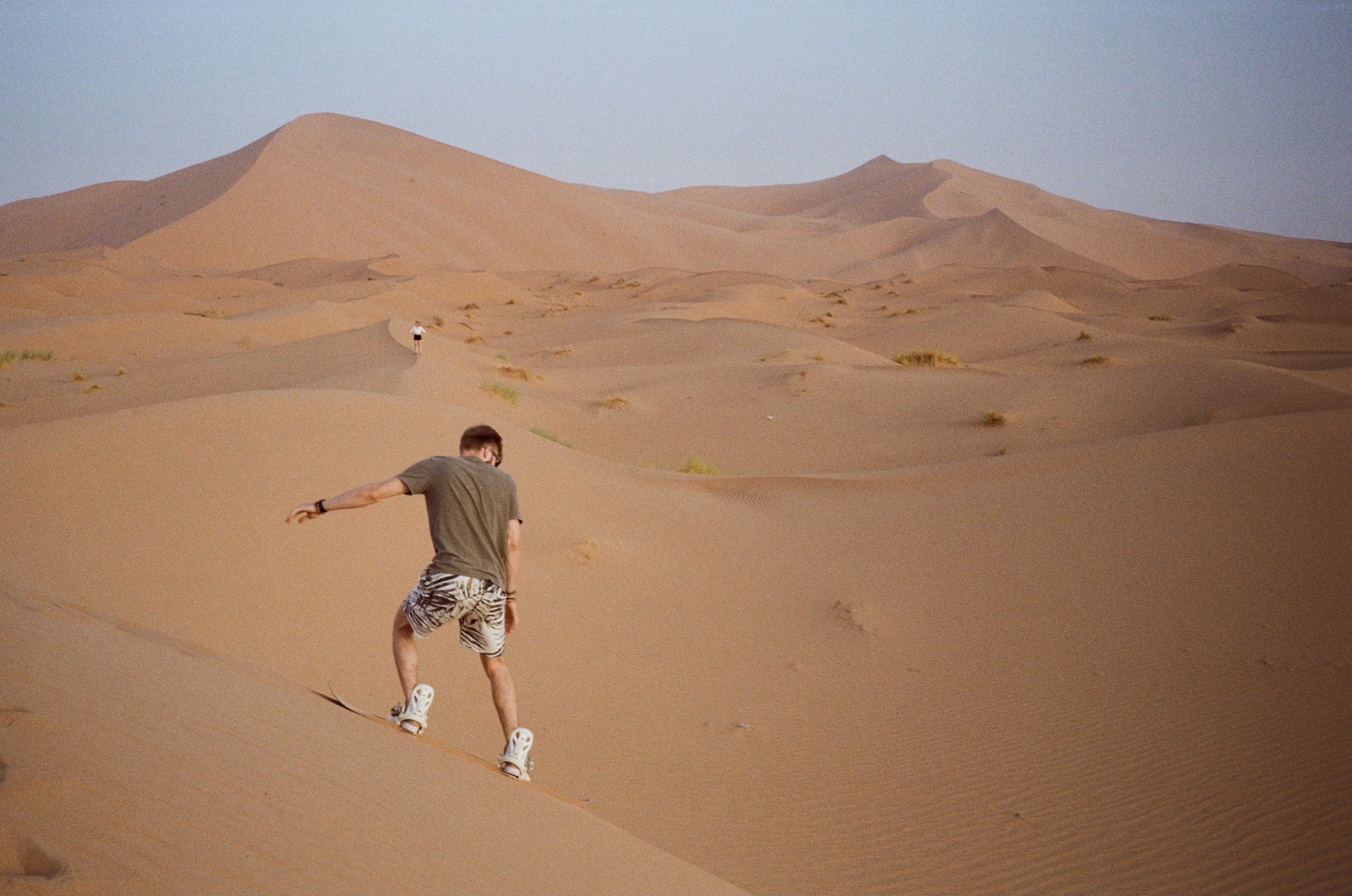
Sandboarding/sand surfing is a sport that involves riding down a hill of sand on a board or surfboard.
There are different names for this sport, but they all refer to the same thing - using a waxed board to go down sand dunes at high speed. This can be done using different pieces of equipment, depending on what you prefer.
Sandboarding is a lot like snowboarding or surfing. You use foot bindings to glide on the sand. If you want to try bodyboarding, you can use a sand sled.
There are different ways to do sandboarding, depending on what terrain you are on. There is a standard way of doing it, the same as snowboarding. You have a stance similar to skiing, with one foot in front of the other.
You can also try lying down on your stomach and using your hands to steer. This is called prone sandboarding. Another variation is stand-up sandboarding, which is just like regular surfing.
Things to Know Before Going Sandboarding/Sand Surfing
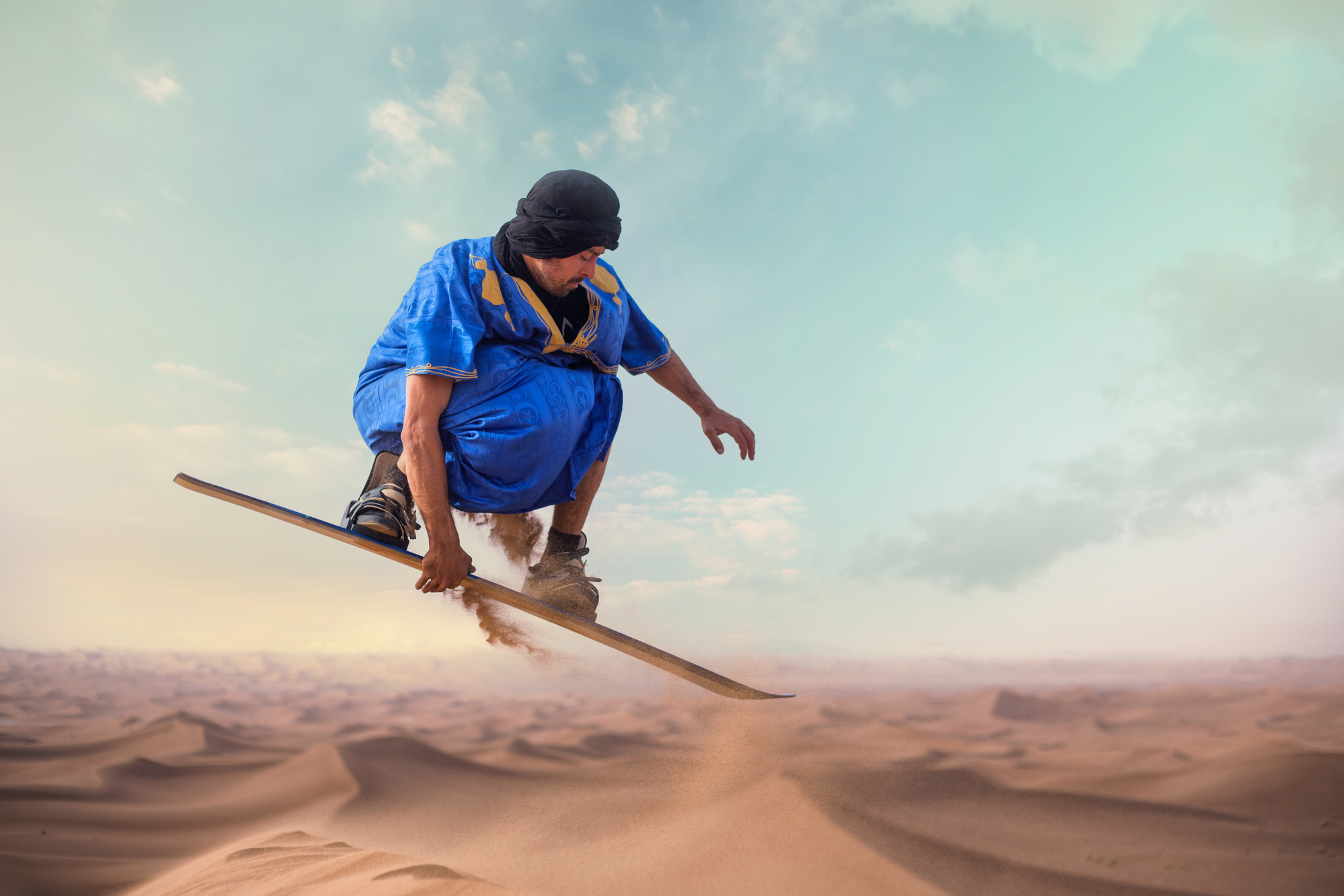
Just like with any other sport, there are some things you need to know before trying sandboarding/sand surfing.
1. Make sure you are in good physical condition. This is not a sport for the weak or out of shape.
You'll need to be in good physical condition to try sandboarding/sand surfing, as it can be quite strenuous. The activity involves a lot of running and jumping to get on your board and then riding down the hill. If you're not in good shape, you might find it challenging to keep up.
2. Be aware of the terrain. When you're sandboarding/sand surfing, it's important to be mindful of your surroundings.
You don't want to crash into a tree or run into rocks. Make sure you know the terrain before starting down the hill.
3. Wear the proper gear. Just like with skiing or snowboarding, you'll need to wear the appropriate attire when sandboarding/sand surfing.
You'll want to dress in layers, as it can be pretty warm on the sand but cool once you start moving. It's also important to have sunscreen and a hat to protect your skin from the sun. You'll also want to wear goggles to protect your eyes from sand.
4. You'll need the proper equipment. This includes a board or surfboard, bindings, and a helmet. Make sure everything is in good condition and that you know how to use it before hitting the sand dunes.
5. Practice on a smaller hill before tackling a bigger one. It's always a good idea to practice on a smaller hill before trying the big ones.
This will give you a chance to get used to the board and the terrain. You don't want to try sandboarding/sand surfing for the first time on a huge hill, as you might not be able to make it down.
6. Renting equipment in some locations around the world can be challenging.
You'll need to bring your own board and gear with you most of the time. So if you're planning on trying this sport, make sure you're prepared. Check out the different locations where you can sandboard/sand surf and see the requirements.
7. For beginners, the desert climate can be harsh. Always take precautions if you're not used to the heat. Make sure you drink plenty of water and stay hydrated. Wear sunscreen and a hat, and avoid being out in the sun during the hottest part of the day.
8. If you're sandboarding in a group, be aware of your surroundings. This is especially important if you're on a hill with other people.
You don't want to end up crashing into someone else or running them over. Make sure you know what the other people in your group are doing and stay out of their way.
9. It's good to have some basic knowledge of snowboarding or surfing before trying sandboarding/sand surfing.
This will help you understand the terminology and how to stay on the board.
Falling off a board at high speeds can be dangerous, so knowing what you're doing is essential.
10. Be careful when sandboarding/sand surfing. This is definitely a sport where you need to be extra vigilant.
There are a lot of things that can go wrong, and you don't want to end up getting injured. Make sure you know what you're doing before heading down the hill.
What Kind of Equipment Do You Need for Sandboarding/Sand Surfing?
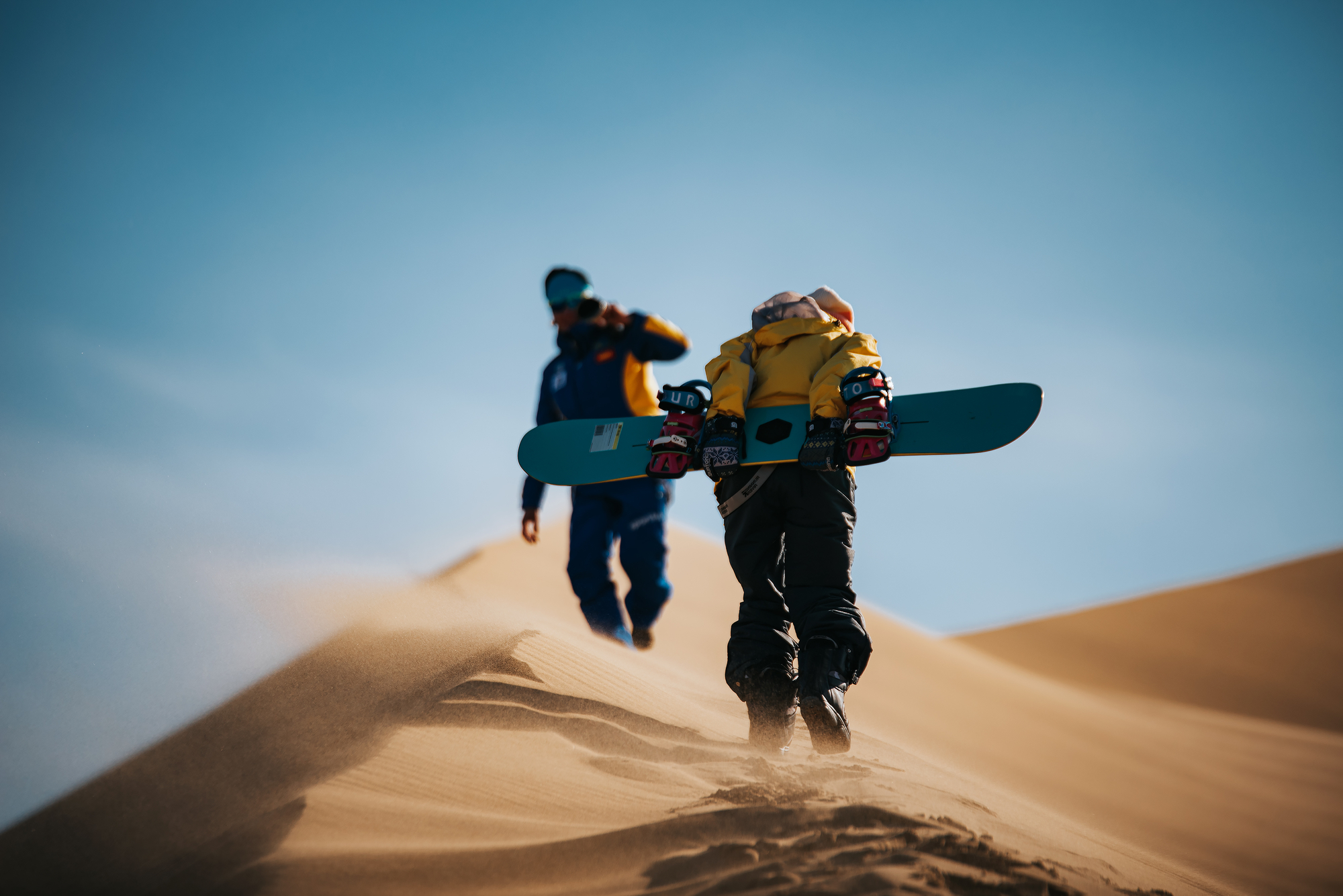
Like with any other sport, you'll need some sandboard/sand surf equipment. Here's a list of what you'll need:
1. Goggles
Although it's not a requirement, it's good to wear goggles when sandboarding/sand surfing. This will protect your eyes from the sand that might be flying around.
Sunglasses can also work in place of goggles if you don't have them. Goggles are essential if you plan on doing any jumping, as they'll protect your eyes from any potential crashes.
2. Sandboard Bindings
Bindings are what attach your feet to the sandboard. There are a few different types, so be sure to choose the right ones for you. They should be comfortable and fit well.
If you're renting equipment, make sure to ask about the bindings before leaving.
Some places might not have a wide variety of sizes, so it's important to know what you need ahead of time.
3. Proper Clothing
Just like with skiing or snowboarding, you'll need to wear the proper clothing when sandboarding/sand surfing.
You'll want to dress in layers, as it can be pretty warm on the sand but cool once you start moving. It's also important to have sunscreen and a hat to protect your skin from the sun. You might also want to bring a jacket in case it gets cold later in the day.
Make sure you avoid wearing clothes that can get caught on things like long skirts or dresses.
4. Sandboard
There are a few different types of sandboards, so choose the right one for you. There are longboards, shortboards, and even twin tip boards.
Be sure to choose a board that's in good condition and that you know how to use it before hitting the sand dunes.
If you're renting a board, ask about the different types and what might be best for you.
You'll also need some sandboard wax to help you stay on the board. There are a few different types of wax, so be sure to ask about this when renting equipment.
5. Helmet
A helmet is not required, but it's a good idea to wear one when sandboarding/sand surfing. This will protect your head in case of a fall.
Again, if you're renting equipment, be sure to ask about the availability of helmets and what type might be best for you.
6. Gloves
Gloves are not essential, but they can help you stay on the board. The gloves should be tight-fitting so that they don't fly off when you're sandboarding/sand surfing.
Beginners might want to try wearing gloves until they get the hang of it. Of course, you can always take them off if you start to feel too hot.
Sandboarding/ Sand Surfing Lingo to Know
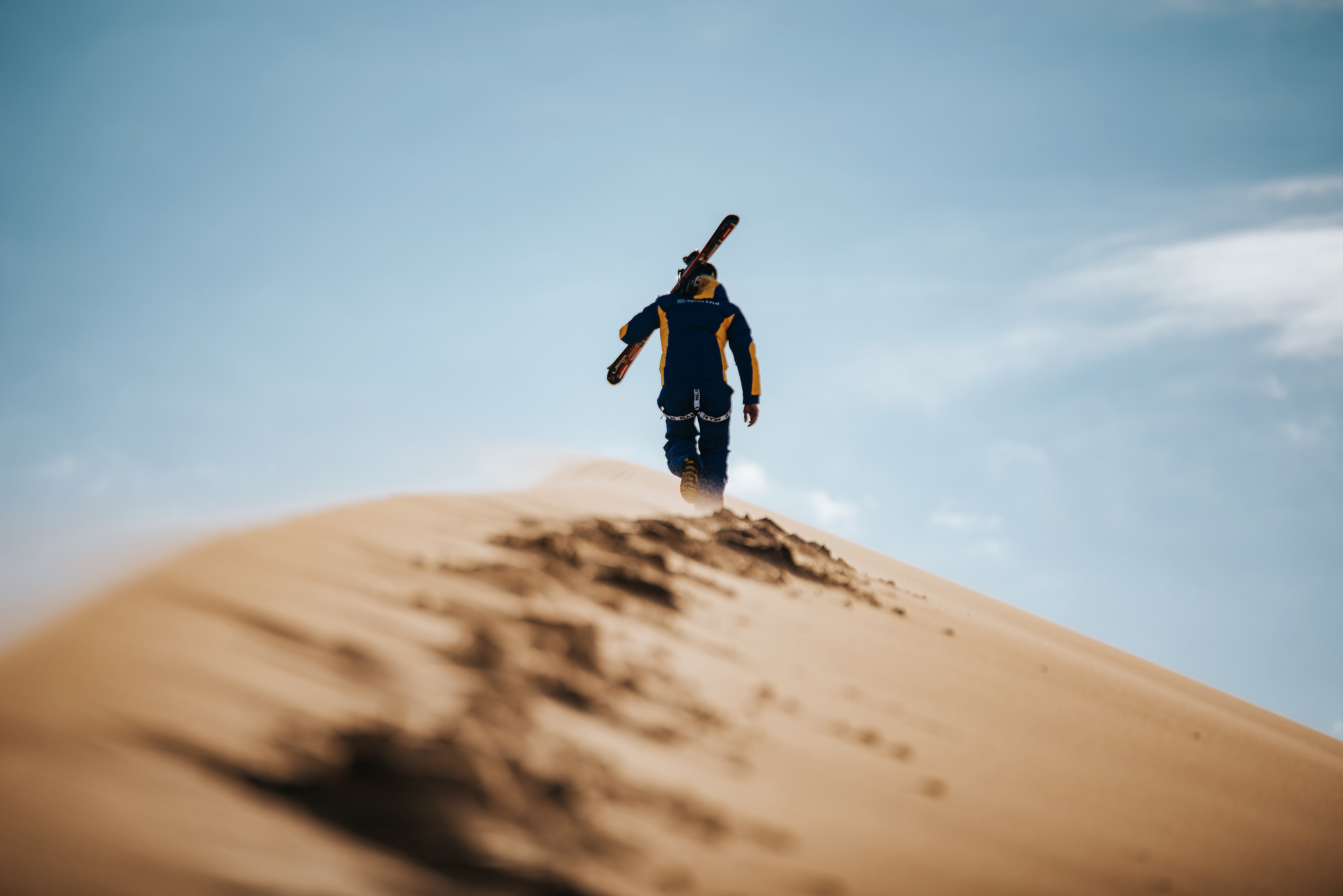
Before heading out to the dunes, knowing some of the lingo associated with sandboarding/sand surfing can be helpful. Here are a few terms you should know:
- Segmented edges: The steel edges surrounding the sandboard's edges are segmented edges. They give the board strength, which is beneficial for its longevity.
- Backfoot: "Backfoot," like other sports that use a board, refers to the foot nearest to the board's tail. It's important to keep this foot back when riding the board.
- Backcountry: Refers to the area where sandboarders gather to show their skills on the dunes. When sandboarding/sand surfing in the backcountry, it's important to be aware of your surroundings and stay safe.
- Drop: When a sandboarder drops into a descent, they do so with speed and control. This is an advanced move that should only be attempted by those who are experienced riders.
When is the Best Time for Sandboarding/Sand Surfing?
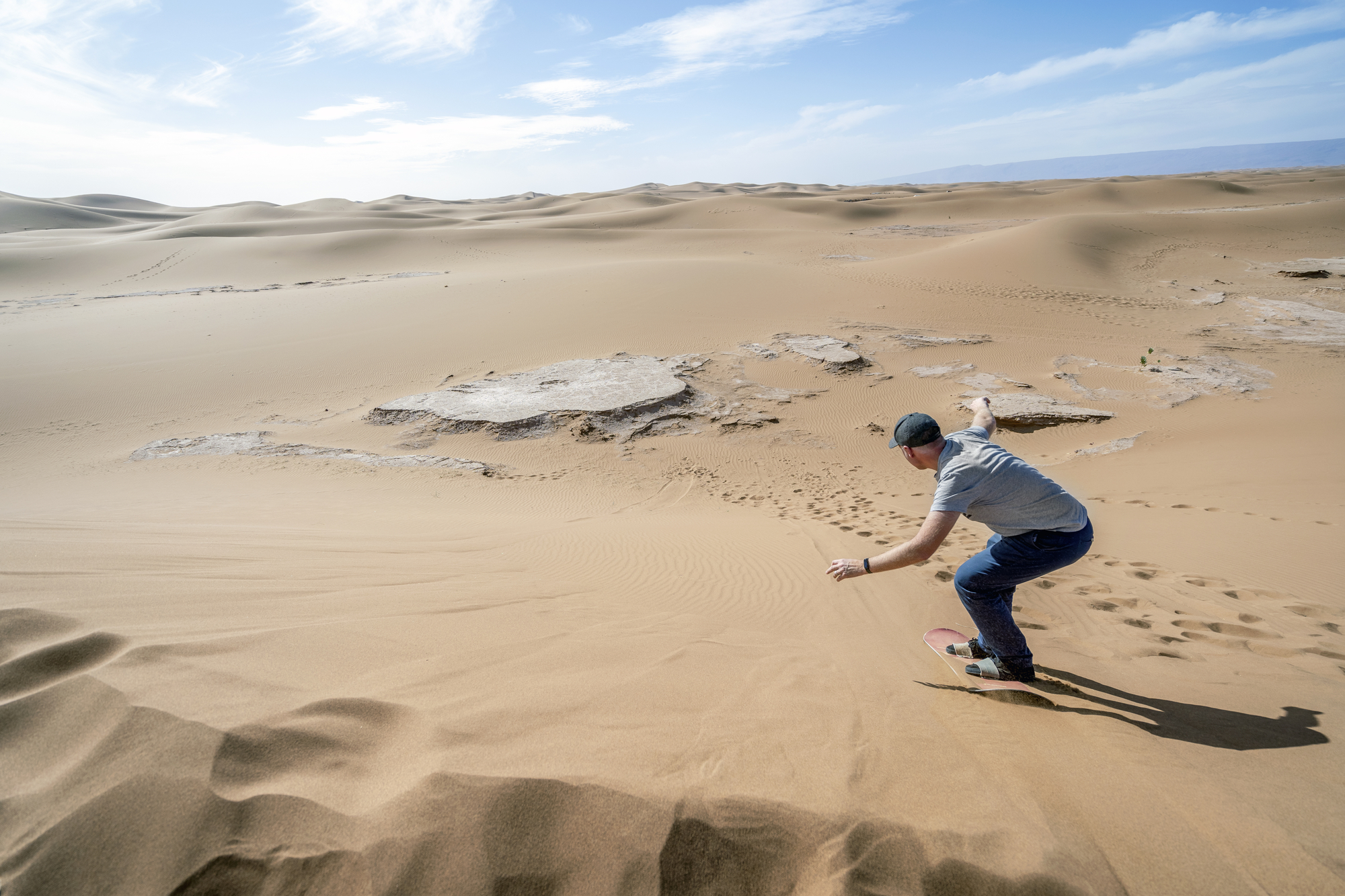
Sandboarding/sand surfing can be enjoyed year-round, but the best time to do it is during the winter. This is when the sand dunes are the most accessible, and there's less chance of running into people.
Of course, if you're looking for a challenge, you might want to try sandboarding/sand surfing during the summer. The sand will be much hotter, but you'll have the chance to try some more advanced tricks.
Extreme heat should be avoided on the beach or in the desert since it is hazardous during the day. Overall, there are many possibilities for various sandboarding locations.
So, we recommend researching the best places to sandboard/sand surf before heading out. Be sure to consider the weather conditions and what you're looking for in a good sandboarding experience.
With these tips, you're ready to hit the dunes!
Conclusion
Sandboarding/sand surfing is a great way to have some fun and get a good workout at the same time. Whether you're a beginner or an experienced rider, there's something for everyone in this sport.
Be sure to dress appropriately, bring the right equipment, and know the lingo before heading out to enjoy some sandboarding/sand surfing!
So, what are you waiting for? Get out there and start riding!

